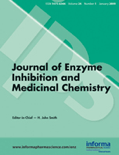
JOURNAL OF ENZYME INHIBITION AND MEDICINAL CHEMISTRY
Scope & Guideline
Exploring Breakthroughs in Therapeutic Strategies
Introduction
Aims and Scopes
- Enzyme Inhibition Research:
The journal publishes articles that explore the mechanisms, efficacy, and selectivity of various enzyme inhibitors, focusing on their potential therapeutic applications in diseases such as cancer, diabetes, and infectious diseases. - Medicinal Chemistry:
Papers often highlight the design, synthesis, and biological evaluation of novel compounds that act as enzyme inhibitors, showcasing the intersection of chemistry and biological efficacy. - Computational Drug Design and Molecular Modelling:
The journal features studies that utilize computational methods, such as molecular docking and dynamics simulations, to predict the efficacy and selectivity of enzyme inhibitors, aiding in the rational design of new drugs. - Natural Products and Derivatives:
Research on natural compounds and their derivatives as enzyme inhibitors is prominently featured, emphasizing the exploration of traditional medicine and natural sources for novel therapeutic agents. - Targeted and Multi-targeted Therapeutics:
The journal explores the development of multi-targeted inhibitors that can simultaneously modulate multiple pathways, reflecting a growing trend in personalized medicine and complex disease treatment.
Trending and Emerging
- COVID-19 Therapeutics:
There has been a significant increase in research focused on developing inhibitors targeting SARS-CoV-2, particularly through enzyme inhibition strategies, reflecting the urgency and relevance of this global health crisis. - Dual and Multi-target Inhibitors:
The trend towards discovering compounds that can inhibit multiple targets simultaneously is gaining momentum, as researchers seek to create more effective treatments that can address complex disease mechanisms. - Artificial Intelligence and Machine Learning in Drug Discovery:
Increasingly, studies are incorporating AI and machine learning techniques to enhance drug discovery processes, particularly in predicting the interactions and efficacy of enzyme inhibitors. - Personalized Medicine Approaches:
Research is increasingly focusing on tailoring therapies to individual patients' profiles, particularly in cancer treatment, which has led to a rise in studies on personalized enzyme inhibitors. - Sustainable and Green Chemistry Practices:
There is a growing emphasis on sustainable practices in the synthesis of enzyme inhibitors, including the use of environmentally friendly solvents and methodologies, reflecting wider trends in the scientific community towards sustainability.
Declining or Waning
- Traditional Medicinal Approaches:
Research focusing solely on traditional medicinal compounds without extensive modification or synthetic approaches appears to be declining, as more emphasis is placed on novel synthetic pathways and targeted therapies. - Single-target Inhibitors:
The trend towards developing inhibitors that target single enzymes is waning, with a noticeable shift towards multi-target inhibitors and combination therapies that address the complexity of diseases. - Basic Mechanistic Studies:
Although foundational studies on enzyme mechanisms remain important, there is less emphasis on purely mechanistic studies without therapeutic implications, as the journal increasingly prioritizes translational research.
Similar Journals

CHEMISTRY LETTERS
Connecting minds through groundbreaking chemical discoveries.Chemistry Letters, published by the Chemical Society of Japan, is a distinguished academic journal that focuses on pivotal developments in the field of chemistry. Since its inception in 1973, the journal has been a vital platform for the dissemination of novel research findings across various sub-disciplines, encompassing both theoretical advancements and practical applications. As a testament to its significance in the community, Chemistry Letters has achieved a Category Quartile of Q2 in the 2023 ranking for miscellaneous Chemistry journals, reflecting its respected position among peers. Although it does not offer Open Access, the journal remains accessible through institutional subscriptions, thus ensuring a wide reach for its valuable content. With an active scope ranging from general chemistry topics to specialized studies, it is ideal for researchers, professionals, and students alike who seek to contribute to and expand their knowledge within this dynamic field. The journal continuously aims to promote excellence in chemical research, facilitating dialogue and collaboration among chemists worldwide.
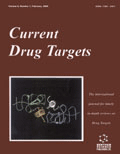
CURRENT DRUG TARGETS
Unraveling the Complexities of Drug ActionCURRENT DRUG TARGETS is a leading peer-reviewed journal dedicated to advancements in the fields of Clinical Biochemistry, Drug Discovery, Molecular Medicine, and Pharmacology. Published by Bentham Science Publishers Ltd, this esteemed journal has solidified its position in the academic community with a 2023 Q2 ranking in several categories, highlighting its influence and relevance in drug research and development. With an ISSN of 1389-4501 and E-ISSN 1873-5592, CURRENT DRUG TARGETS facilitates the dissemination of high-quality articles that explore novel therapeutic strategies and drug design principles. Catered to researchers, professionals, and students, the journal has a commitment to advancing knowledge while addressing contemporary challenges in pharmacological sciences. As it converges from 2000 to 2024, CURRENT DRUG TARGETS remains a vital resource in understanding the complexities of drug action and interaction, making it indispensable for anyone pursuing cutting-edge research in related disciplines.

Fitoterapia
Cultivating Insights into Medicinal PlantsFitoterapia is a prestigious journal published by Elsevier that specializes in the fields of drug discovery and pharmacology. Established in 1948 and featuring a comprehensive scope that encompasses all aspects of medicinal plants and their derivatives, this journal is a critical resource for researchers, professionals, and students interested in the pharmacological effects of natural products. With an impressive impact factor reflected in its Q2 ranking in both Drug Discovery and Medicine as well as a Q3 ranking in Pharmacology, Fitoterapia plays a vital role in promoting innovative research in the intersection of traditional medicine and modern pharmacological science. The journal’s commitment to quality is further highlighted by its rankings in Scopus, where it holds a notable position among peers in its field. Although Fitoterapia does not currently offer Open Access, its reputation for rigor and relevance makes it an indispensable asset for anyone engaged in herbal medicine research and development. Authors and researchers seeking to publish groundbreaking findings will find a welcoming platform to disseminate their work in this influential journal.
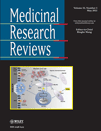
MEDICINAL RESEARCH REVIEWS
Advancing the Frontiers of Therapeutic InnovationMEDICINAL RESEARCH REVIEWS, published by Wiley, is a leading journal in the fields of Drug Discovery, Molecular Medicine, and Pharmacology. With an impressive impact factor and esteemed standing in its category quartiles (Q1 in all three fields), this journal serves as a vital platform for the dissemination of cutting-edge research and reviews that drive innovation in therapeutic development and molecular health sciences. Since its inception in 1981, MEDICINAL RESEARCH REVIEWS has garnered a robust readership within the scientific community, underscored by its high rankings in Scopus – where it ranks #3 in Pharmacology and #2 in Drug Discovery, placing it within the top echelons of academic influence. Researchers, professionals, and students alike benefit from its rich content and comprehensive approaches to tackling complex medicinal challenges, making it an essential resource for those invested in advancing the frontiers of biomedical research.
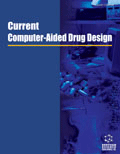
Current Computer-Aided Drug Design
Empowering Researchers with Insights in Computer-Aided Drug DevelopmentCurrent Computer-Aided Drug Design, published by BENTHAM SCIENCE PUBL LTD, is a pivotal journal dedicated to the integration of computer-aided methodologies within the drug design process. With its ISSN 1573-4099 and E-ISSN 1875-6697, this journal serves as a vital resource for researchers, professionals, and students interested in advancing the fields of pharmacology and molecular medicine. Operating under a framework that spans from 2006 to 2024, it aims to foster innovative approaches and discussions surrounding drug design strategies, computational techniques, and the therapeutic potential of novel compounds. Although it currently holds a Q4 rating in Drug Discovery and Molecular Medicine as well as a Q3 in Medicine (miscellaneous) within the 2023 category quartiles, the journal continues to enhance its visibility and relevance in the academic community. Its Scopus rankings reflect its commitment to quality research, positioning it in the context of drug discovery and molecular studies. As the field of drug design evolves, Current Computer-Aided Drug Design remains an essential platform for disseminating cutting-edge findings and facilitating collaboration among specialists aiming for significant advancements in drug development.

RUSSIAN JOURNAL OF BIOORGANIC CHEMISTRY
Fostering Collaboration in Life Sciences ResearchRussian Journal of Bioorganic Chemistry (ISSN: 1068-1620, E-ISSN: 1608-330X), published by MAIK Nauka/Interperiodica/Springer, serves as a vital resource for researchers and professionals in the fields of bioorganic chemistry, biochemistry, and organic chemistry. With a focus on the integration of organic chemistry principles with biological processes, this journal aims to disseminate significant findings and advancements from both theoretical and practical perspectives. Although currently not open access, the journal retains a dedication to high-quality, peer-reviewed content, contributing to its reputation within the academic community. The 2023 Scopus rankings position it within the Q4 category for both biochemistry and organic chemistry, indicating its critical niche within these disciplines amid a competitive landscape. Since its inception in 1996, the journal has continued to evolve, providing enriching insights and fostering collaborations among scholars and practitioners alike, with publication converging up to the year 2024. By exploring complex biomolecular interactions and the synthesis of biologically relevant compounds, the Russian Journal of Bioorganic Chemistry remains a significant platform for advancing knowledge and innovation in the life sciences.

Future Medicinal Chemistry
Transforming challenges into opportunities in drug development.Future Medicinal Chemistry is a premier journal dedicated to the rapidly evolving fields of drug discovery, pharmacology, and molecular medicine. Published by Newlands Press Ltd in the United Kingdom, this journal has garnered significant attention within the academic community, evidenced by its 2023 category rankings in Scopus, placing it in the Q2 quartile for Drug Discovery and the Q3 quartiles for both Molecular Medicine and Pharmacology. With an ISSN of 1756-8919 and an E-ISSN of 1756-8927, Future Medicinal Chemistry has been a cornerstone of scholarly discourse since its inception in 2009, continuously contributing to the advancement of knowledge and discussion in medicinal chemistry. The journal is committed to publishing high-quality, peer-reviewed research that addresses the challenges and innovations in drug development and therapeutic strategies, making it an essential resource for researchers, professionals, and students seeking to stay at the forefront of these critical fields. Engage with the latest findings and methodologies that shape the future of medicine by exploring the wealth of information offered within Future Medicinal Chemistry.
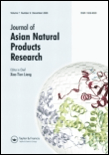
JOURNAL OF ASIAN NATURAL PRODUCTS RESEARCH
Fostering Collaboration for Groundbreaking ResearchJOURNAL OF ASIAN NATURAL PRODUCTS RESEARCH is a prestigious publication in the field of natural products, focusing on valuable research spanning analytical chemistry, pharmacology, and complementary medicine. Published by Taylor & Francis Ltd in the United Kingdom, this journal has established itself as a key resource for academics and professionals seeking to explore advancements in drug discovery and organic chemistry. With a converged publication timeline from 1998 to 2024, the journal boasts several commendable category quartiles as of 2023, reflecting its robust standing in the research community: Q2 in Complementary and Alternative Medicine, Q3 in multiple domains including Analytical Chemistry and Organic Chemistry, and Q4 in Molecular Medicine. Although it currently does not offer open access, the journal remains a valuable compendium for empirical research and innovative studies in areas such as pharmacology and medicinal chemistry. Researchers, professionals, and students alike will find the JOURNAL OF ASIAN NATURAL PRODUCTS RESEARCH to be an essential platform for sharing groundbreaking findings and fostering collaborations that lead to significant advancements in science and health.

BIOORGANIC & MEDICINAL CHEMISTRY LETTERS
Innovating drug discovery through biochemistry insights.BIOORGANIC & MEDICINAL CHEMISTRY LETTERS, published by PERGAMON-ELSEVIER SCIENCE LTD, is a leading journal in the fields of biochemistry, drug discovery, and medicinal chemistry, designed to disseminate significant advances in these disciplines. Established in 1991, the journal spans various important categories, including Organic Chemistry and Pharmaceutical Science, with its 2023 Scimago Journal Rank placing it at Q2 in Organic Chemistry and Q3 in several other relevant fields. Though not an open-access publication, it provides invaluable insights into contemporary research and innovative methodologies, appealing to researchers, professionals, and students alike. The journal's commitment to quality and relevance makes it a vital resource for those aiming to stay at the forefront of bioorganic and medicinal chemistry developments. For more information, please visit the journal's website as it remains a critical platform for scholarly exchange, particularly for those engaged in interdisciplinary research.
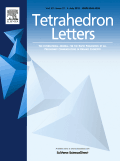
TETRAHEDRON LETTERS
Unveiling Breakthroughs in Organic Chemistry and BeyondTETRAHEDRON LETTERS, published by Pergamon-Elsevier Science Ltd, is a leading journal in the fields of Biochemistry, Drug Discovery, and Organic Chemistry, with a rich legacy since its inception in 1959. This prestigious journal serves as a vital resource for researchers and professionals dedicated to advancing the understanding of chemical sciences, featuring high-impact research that influences both academic and practical applications. Although it is currently classified in the third quartile across its categories for 2023, its rigorous peer-review process ensures the publication of quality research that contributes to the scientific community. With an ISSN of 0040-4039 and an E-ISSN of 1873-3581, TETRAHEDRON LETTERS is easily accessible for those in the academic landscape seeking to stay abreast of innovative developments. Researchers, professionals, and students alike will find invaluable insights and collaborative opportunities within the pages of TETRAHEDRON LETTERS, making it an essential read for anyone involved in the chemical sciences.